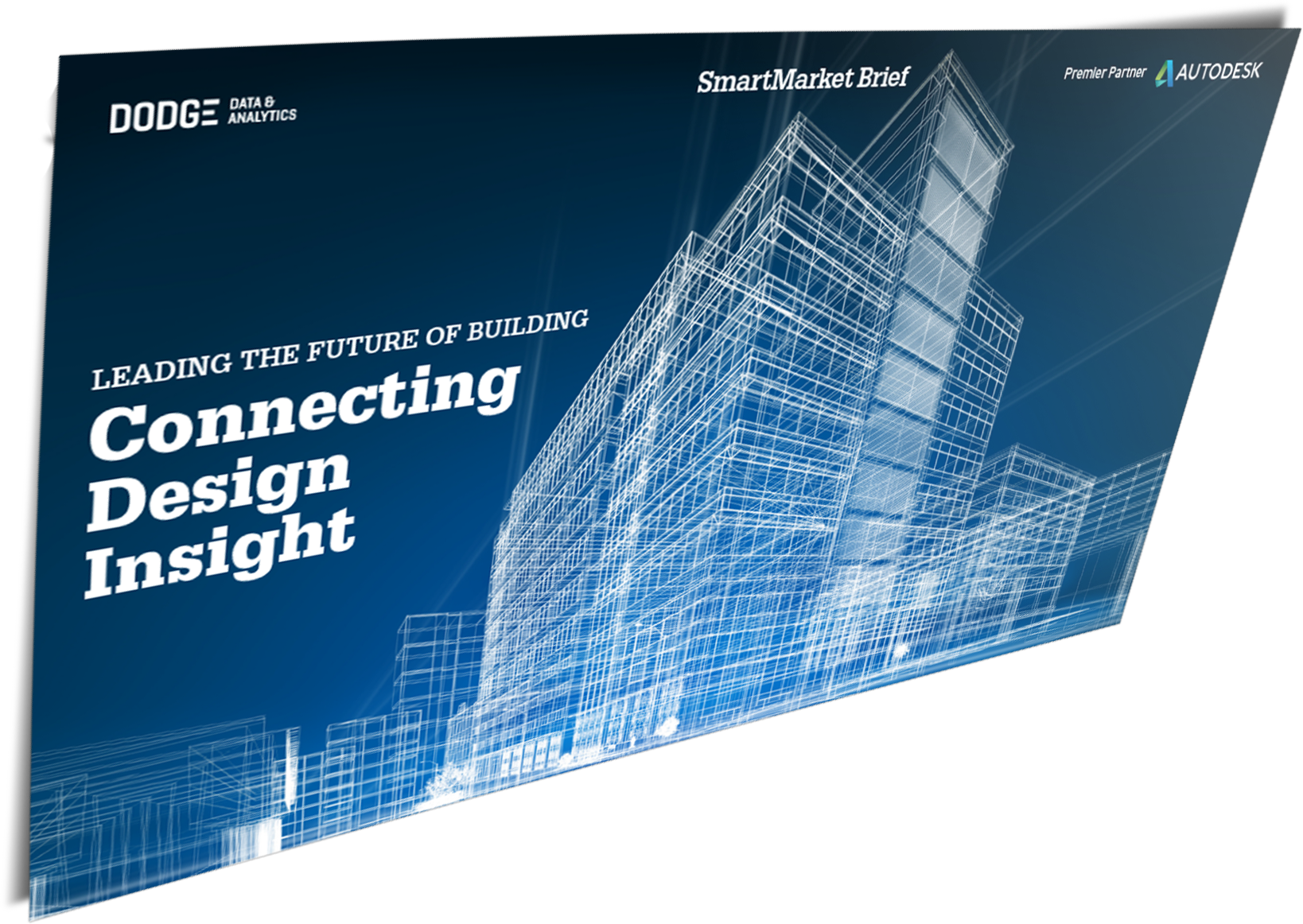Connecting Design Insight refers to the part of the BIM process that enables users to capture, create, and compute data and evaluate alternatives in a real-world context. The ability to access analytical insight early on in the design phase supports “best possible” as opposed to “best practical” project outcomes. Users can also learn from operational data gathered across the building lifecycle to support the continuous improvement of decision-making.
The research presented in this report by Dodge Data & Analytics is based on surveys of US architects and engineers to benchmark current awareness, usage, and benefits related to a number of these types of BIM insight capabilities.
Fill out the form below to download the report, and contact us to find out more about how BIM can help you turn your vision into reality.

Value of BIM for Improving Design Insight | Highly engaged architects and engineers (using BIM on more than half their current work) were asked about BIM, cloud connectivity, and data that facilitate design insight. Read this report about its findings.
Generating Design Options: Awareness & Use | This portion of the study focuses on six specific insight capabilities that help to generate design options more efficiently.
Generating Design Options: Benefits of Generative Design | This section of the report provides specific findings from its current users about the positive impact of generative design on improving the design process, improving design solutions, and improving downstream production, construction, and operation.
Analyzing Design Options | This portion of the study focuses on five specific insight capabilities that help design teams to analyze design options more quickly and effectively.
Report Created By:

Technology is radically disrupting the way buildings and infrastructure is designed, built, and used. Disruptive innovation is transforming markets, and traditional methods of working are being displaced.
Tools and processes are evolving rapidly, blurring the lines between physical and digital, and creating a new landscape for innovation and competition.